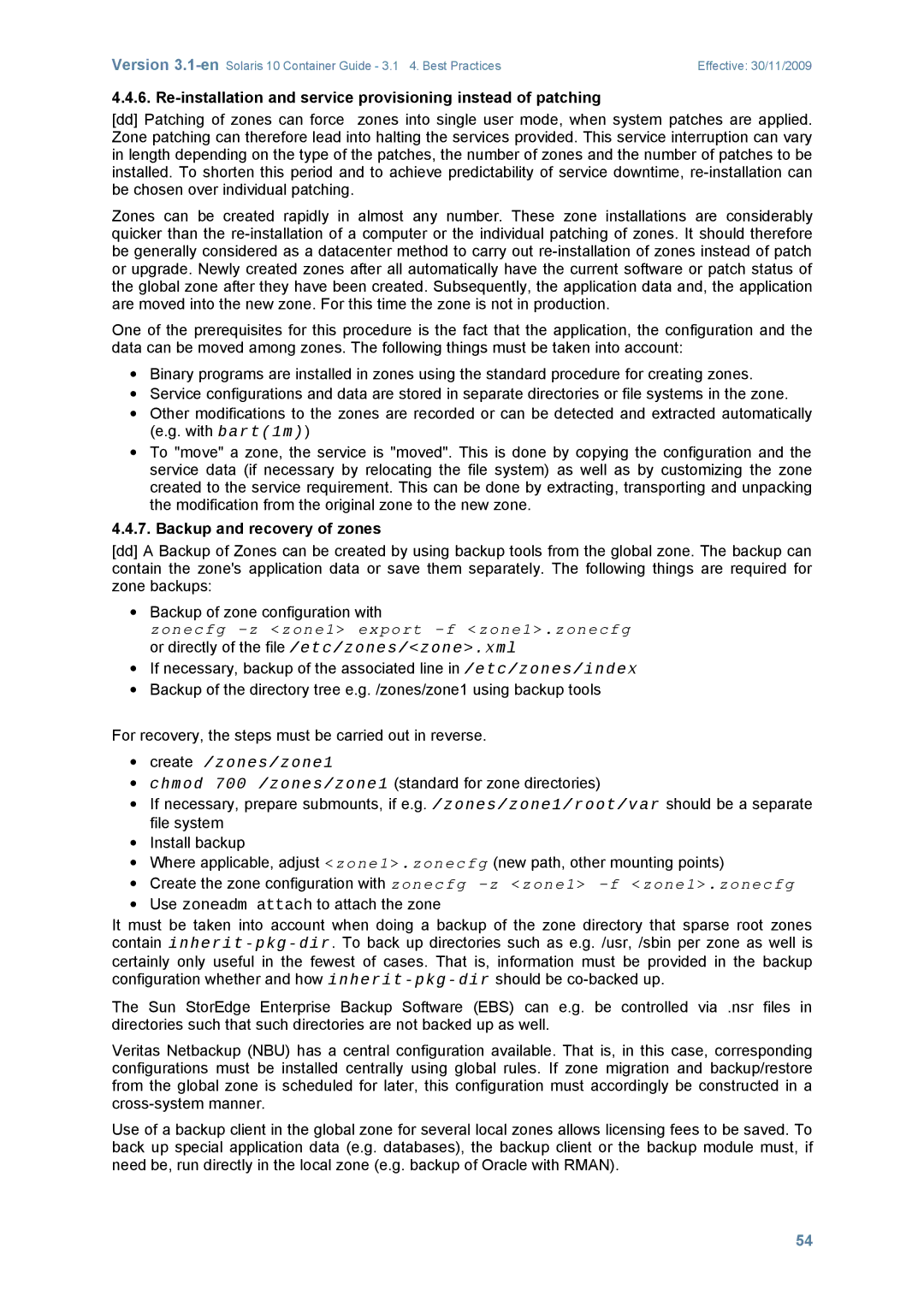Version | Effective: 30/11/2009 |
4.4.6.
[dd]Patching of zones can force zones into single user mode, when system patches are applied. Zone patching can therefore lead into halting the services provided. This service interruption can vary in length depending on the type of the patches, the number of zones and the number of patches to be installed. To shorten this period and to achieve predictability of service downtime,
Zones can be created rapidly in almost any number. These zone installations are considerably quicker than the
One of the prerequisites for this procedure is the fact that the application, the configuration and the data can be moved among zones. The following things must be taken into account:
∙Binary programs are installed in zones using the standard procedure for creating zones.
∙Service configurations and data are stored in separate directories or file systems in the zone.
∙Other modifications to the zones are recorded or can be detected and extracted automatically (e.g. with bart(1m))
∙To "move" a zone, the service is "moved". This is done by copying the configuration and the service data (if necessary by relocating the file system) as well as by customizing the zone created to the service requirement. This can be done by extracting, transporting and unpacking the modification from the original zone to the new zone.
4.4.7. Backup and recovery of zones
[dd]A Backup of Zones can be created by using backup tools from the global zone. The backup can contain the zone's application data or save them separately. The following things are required for zone backups:
∙Backup of zone configuration with
zonecfg
∙If necessary, backup of the associated line in /etc/zones/index
∙Backup of the directory tree e.g. /zones/zone1 using backup tools
For recovery, the steps must be carried out in reverse.
∙create /zones/zone1
∙ chmod 700 /zones/zone1 (standard for zone directories)
∙If necessary, prepare submounts, if e.g. /zones/zone1/root/var should be a separate file system
∙Install backup
∙Where applicable, adjust <zone1>.zonecfg (new path, other mounting points)
∙ Create the zone configuration with zonecfg
∙Use zoneadm attach to attach the zone
It must be taken into account when doing a backup of the zone directory that sparse root zones contain
The Sun StorEdge Enterprise Backup Software (EBS) can e.g. be controlled via .nsr files in directories such that such directories are not backed up as well.
Veritas Netbackup (NBU) has a central configuration available. That is, in this case, corresponding configurations must be installed centrally using global rules. If zone migration and backup/restore from the global zone is scheduled for later, this configuration must accordingly be constructed in a
Use of a backup client in the global zone for several local zones allows licensing fees to be saved. To back up special application data (e.g. databases), the backup client or the backup module must, if need be, run directly in the local zone (e.g. backup of Oracle with RMAN).
54
